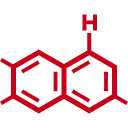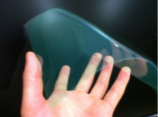Organic Long Persistent Luminescence (OLPL) Material (No. 0165, 0166)
|
|
<< Back to all technologies |
Summary
Glow-in-the-dark materials are widely employed in applications such as emergency signage, bioimaging and consumer goods. The inorganic materials currently used as glow-in-the-dark materials are not environmentally friendly, are difficult to process for certain applications and have a limited excitation band. A team of OIST researchers led by Prof. Ryota Kabe has developed a novel, fully organic long persistent luminescence (OLPL) material. This material is transparent and soluble, and can be readily processed into flexible thin films. The luminescence color can be adjusted through the addition of organic dopants. The robust and flexible composition of this material can reduce the cost and environmental impact of existing glow-in-the-dark products, as well as open up new applications e.g. as flexible films/paints for large areas and as biomarkers.
Applications
- Glow-in-the-dark paints and films
- Bioimaging
Advantages
- Free of rare metal materials
- Soluble and easy to process
- Broad excitation and emission wavelength range
- Tunable color
Technology
This novel OLPL material is based on a blend of organic donor and acceptor molecules which is free from rare elements and is easy to fabricate and process, as it is soluble and as such does not require high processing temperatures. The luminescence arises from the emission from excited complexes (exciplexes) upon the recombination of long-lived charge-separated states. The material can be excited by a standard white LED light source and generates long-lasting emission even at temperatures above 100 degC.
Media Coverage and Presentations
![]() News: Casting light on glow-in-the-dark materials
News: Casting light on glow-in-the-dark materials
CONTACT FOR MORE INFORMATION
![]() Graham Garner
Graham Garner
Technology Licensing Section
![]() tls@oist.jp
tls@oist.jp
![]() +81(0)98-966-8937
+81(0)98-966-8937







